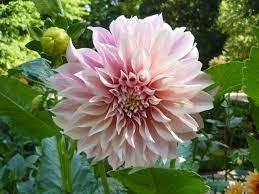**Medicinal Chrysanthemum Flowers in Pharmacognosy**

Medicinal chrysanthemum (Chrysanthemum spp.) holds a significant place in pharmacognosy, the study of natural products from plants and their medicinal properties. Chrysanthemum flowers have been recognized for centuries for their therapeutic potential and are extensively studied for their pharmacological benefits and phytochemical composition. In this detailed exploration, we delve into the role of medicinal chrysanthemum flowers in pharmacognosy, highlighting their pharmacological activities, bioactive compounds, and pharmaceutical applications.
**1. Botanical Description and Classification**
Medicinal chrysanthemum belongs to the genus Chrysanthemum within the Asteraceae family, which encompasses a diverse group of flowering plants commonly known as daisies or sunflowers. The botanical characteristics of medicinal chrysanthemum include:
– **Flowers:** Chrysanthemum flowers are composite inflorescences consisting of a central disc surrounded by ray florets. They exhibit a wide range of colors, including white, yellow, orange, pink, and purple, and come in various shapes such as single, double, pompon, and spider forms.
– **Leaves:** The leaves of chrysanthemum plants are typically lobed or serrated and emit a distinctive fragrance when crushed. They contain essential oils and bioactive compounds that contribute to their medicinal properties.
– **Species:** The genus Chrysanthemum comprises numerous species and cultivars, each with unique characteristics and medicinal uses. Common species include Chrysanthemum indicum, Chrysanthemum morifolium, and Chrysanthemum zawadskii.
**2. Phytochemical Composition**
Medicinal chrysanthemum flowers contain a rich array of phytochemicals, including flavonoids, phenolic acids, terpenoids, and essential oils. These bioactive compounds contribute to the therapeutic properties and pharmacological activities of chrysanthemum. Key phytochemical constituents of chrysanthemum flowers include:
– **Flavonoids:** Chrysanthemum flowers are rich in flavonoids such as luteolin, apigenin, and quercetin, which exhibit antioxidant, anti-inflammatory, and immune-modulating effects.
– **Phenolic Acids:** Chlorogenic acid and caffeic acid are common phenolic acids found in chrysanthemum flowers. These compounds contribute to the antioxidant activity and health benefits of chrysanthemum.
– **Terpenoids:** Sesquiterpene lactones, such as parthenolide and artecanin, are characteristic compounds in chrysanthemum flowers with anti-inflammatory and cytotoxic properties.
– **Essential Oils:** Chrysanthemum flowers contain volatile essential oils that contribute to their aromatic properties and therapeutic effects. Common components of chrysanthemum essential oils include camphor, borneol, and cineole.
**3. Pharmacological Activities**
The pharmacological activities of medicinal chrysanthemum flowers are attributed to their diverse phytochemical composition. Chrysanthemum exhibits a range of pharmacological effects, including:
– **Anti-inflammatory:** Chrysanthemum extracts possess potent anti-inflammatory properties, inhibiting pro-inflammatory mediators and pathways. They are used to alleviate pain and inflammation associated with arthritis, skin conditions, and respiratory disorders.
– **Antioxidant:** Chrysanthemum flowers are rich in antioxidants that scavenge free radicals and protect cells from oxidative damage. Regular consumption of chrysanthemum tea or extracts may reduce the risk of chronic diseases linked to oxidative stress.
– **Antimicrobial:** Chrysanthemum extracts exhibit broad-spectrum antimicrobial activity against bacteria, fungi, and viruses. They are used in herbal formulations to treat infections and promote wound healing.
– **Sedative and Anxiolytic:** Chrysanthemum tea has calming and sedative effects, making it useful for reducing anxiety, promoting relaxation, and improving sleep quality.
– **Hepatoprotective:** Chrysanthemum extracts support liver health by reducing liver inflammation, enhancing detoxification, and protecting against liver damage caused by toxins and oxidative stress.
**4. Pharmaceutical Applications**
Medicinal chrysanthemum flowers have diverse pharmaceutical applications and are utilized in various forms for therapeutic purposes. Some pharmaceutical applications of chrysanthemum include:
– **Herbal Preparations:** Chrysanthemum flowers are incorporated into herbal formulations, including teas, tinctures, extracts, and capsules, for internal use. These preparations are used to address specific health conditions such as inflammation, allergies, and respiratory ailments.
– **Topical Products:** Chrysanthemum extracts and essential oils are used in topical formulations such as creams, ointments, and lotions for skin care. They have anti-inflammatory, antimicrobial, and wound-healing properties.
– **Eye Care Products:** Chrysanthemum-infused solutions and eye washes are used to relieve eye
strain, reduce redness, and improve vision. Chrysanthemum is valued for its soothing and rejuvenating effects on the eyes.
– **Phytopharmaceuticals:** Chrysanthemum-derived compounds are investigated for their potential as phytopharmaceuticals targeting specific diseases and health conditions. Research continues to explore the therapeutic potential of chrysanthemum in drug development.
**Conclusion**
Medicinal chrysanthemum flowers play a vital role in pharmacognosy, offering a treasure trove of bioactive compounds and pharmacological activities. From their anti-inflammatory and antioxidant effects to their antimicrobial and hepatoprotective properties, chrysanthemum flowers are valued for their diverse therapeutic applications in traditional and modern pharmaceutical practices. Embrace the botanical richness of medicinal chrysanthemum and explore its potential as a natural remedy for promoting health and well-being through evidence-based pharmacognosy.
**Part 2: Medicinal Chrysanthemum Flowers in Pharmacognosy**
In the realm of pharmacognosy, medicinal chrysanthemum flowers hold a distinguished position as a source of valuable bioactive compounds with diverse pharmaceutical applications. This section delves deeper into the pharmacological properties, research advancements, and pharmaceutical uses of chrysanthemum flowers, elucidating their role in modern pharmacognosy.
**5. Research Advances in Pharmacological Activities**
Medicinal chrysanthemum flowers have been extensively studied for their pharmacological activities, leading to significant discoveries in drug development and therapeutic interventions. Recent research highlights include:
– **Anti-cancer Effects:** Chrysanthemum extracts containing sesquiterpene lactones, such as parthenolide and artecanin, demonstrate promising anti-cancer properties. These compounds inhibit tumor growth and induce apoptosis in cancer cells, suggesting their potential as adjunct therapies for various cancers.
– **Neuroprotective Effects:** Chrysanthemum extracts exhibit neuroprotective effects against neurodegenerative disorders like Alzheimer’s disease and Parkinson’s disease. Bioactive compounds in chrysanthemum flowers enhance neuronal survival, reduce oxidative stress, and mitigate neuroinflammation.
– **Cardioprotective Benefits:** Chrysanthemum-derived flavonoids and phenolic acids contribute to cardiovascular health by reducing blood pressure, improving blood flow, and protecting against oxidative damage to cardiac tissues. Chrysanthemum supplements are investigated for their potential in preventing heart disease.
– **Anti-diabetic Properties:** Chrysanthemum extracts show hypoglycemic effects by enhancing insulin sensitivity and regulating glucose metabolism. These findings support the use of chrysanthemum as a natural remedy for managing diabetes and related metabolic disorders.
– **Immunomodulatory Activities:** Chrysanthemum compounds modulate immune responses by activating immune cells and cytokine production. Chrysanthemum-based formulations are explored for their immunomodulatory effects in autoimmune diseases and immune disorders.
**6. Pharmaceutical Formulations and Applications**
The pharmaceutical industry leverages the bioactive compounds of medicinal chrysanthemum flowers in various formulations for therapeutic purposes. Some notable pharmaceutical applications of chrysanthemum include:
– **Herbal Medicines:** Chrysanthemum-based herbal medicines are prescribed in traditional and integrative medicine systems to treat inflammatory conditions, respiratory ailments, digestive disorders, and skin diseases. These formulations often combine chrysanthemum with other herbs for synergistic effects.
– **Natural Supplements:** Chrysanthemum supplements, available in capsule or tablet form, provide concentrated doses of bioactive compounds for targeted health benefits. Chrysanthemum supplements are used to support immune function, promote liver detoxification, and manage chronic inflammatory conditions.
– **Cosmeceuticals:** Chrysanthemum extracts are incorporated into cosmetic products for skin care, including moisturizers, serums, and facial masks. Chrysanthemum’s anti-inflammatory and antioxidant properties help soothe sensitive skin, reduce redness, and protect against environmental damage.
– **Phytopharmaceuticals:** Chrysanthemum-derived compounds are investigated as potential drug candidates for pharmaceutical development. Researchers are exploring the therapeutic potential of chrysanthemum in the treatment of cancer, neurodegenerative diseases, cardiovascular disorders, and metabolic syndromes.
**7. Quality Control and Standardization**
The commercialization of chrysanthemum-based pharmaceutical products necessitates stringent quality control measures to ensure safety, efficacy, and consistency. Key aspects of quality control include:
– **Authentication of Plant Material:** Verify the identity and purity of chrysanthemum raw materials through botanical identification, microscopy, and chemical fingerprinting.
– **Standardized Extraction Processes:** Optimize extraction methods to obtain consistent concentrations of bioactive compounds while preserving their stability and bioavailability.
– **Analytical Techniques:** Employ chromatographic and spectroscopic methods (e.g., HPLC, GC-MS, NMR) to quantify specific phytochemicals and ensure batch-to-batch consistency.
– **Regulatory Compliance:** Adhere to regulatory guidelines and quality standards (e.g., Good Manufacturing Practices, Pharmacopeial specifications) to meet safety and efficacy requirements for pharmaceutical products.
**8. Future Perspectives and Research Directions**
The future of medicinal chrysanthemum in pharmacognosy holds promising avenues for innovation and discovery. Research priorities and emerging trends include:
– **Drug Synergy Studies:** Investigate synergistic interactions between chrysanthemum compounds and conventional drugs for enhanced therapeutic outcomes.
– **Nanoformulations:** Develop nanotechnology-based delivery systems for targeted delivery of chrysanthemum bioactives to specific tissues and cells.
– **Clinical Trials:** Conduct rigorous clinical trials to evaluate the efficacy and safety of chrysanthemum-derived formulations in human populations.
– **Biotechnological Approaches:** Explore biotechnological methods, such as plant tissue culture and genetic engineering, to enhance the production of bioactive compounds in chrysanthemum.
**Conclusion**
Medicinal chrysanthemum flowers represent a treasure trove of bioactive compounds with profound pharmacological activities and pharmaceutical applications in modern pharmacognosy. From their anti-cancer and neuroprotective effects to their cardiovascular benefits and immunomodulatory properties, chrysanthemum flowers continue to inspire scientific exploration and therapeutic innovation. Embrace the potential of medicinal chrysanthemum as a source of natural remedies and pharmaceutical leads, driving advancements in drug discovery and integrative healthcare.

